Hiking is a tough work at times and be both physically and mentally demanding. With this, comes a serious ravenous hunger.
The thing is, when out roughing it in the wild – you can’t just hop in to the nearest Taco Bell. You’re going to need a plan. Take some food with you!
But what do you take? What is the best hiking lunch? Today, we look at some great ideas.
Before You Start
Okay, so before you just stuff your bag with whatever you feel like eating – it’s important to think of some things that might hinder your experience and cause problems.
Further, as well as thinking about what you can bring with you to eat on your hike, it’s worth considering what you should eat before you hike.
Other considerations include:
Weight
You’re hiking. It’s hard, particularly when trudging difficult terrain. So you’re not gonna want to take a really heavy load of food with you.
If anything, it is the polar opposite of the point of food as you’ll be exerting more energy than the food will provide you.
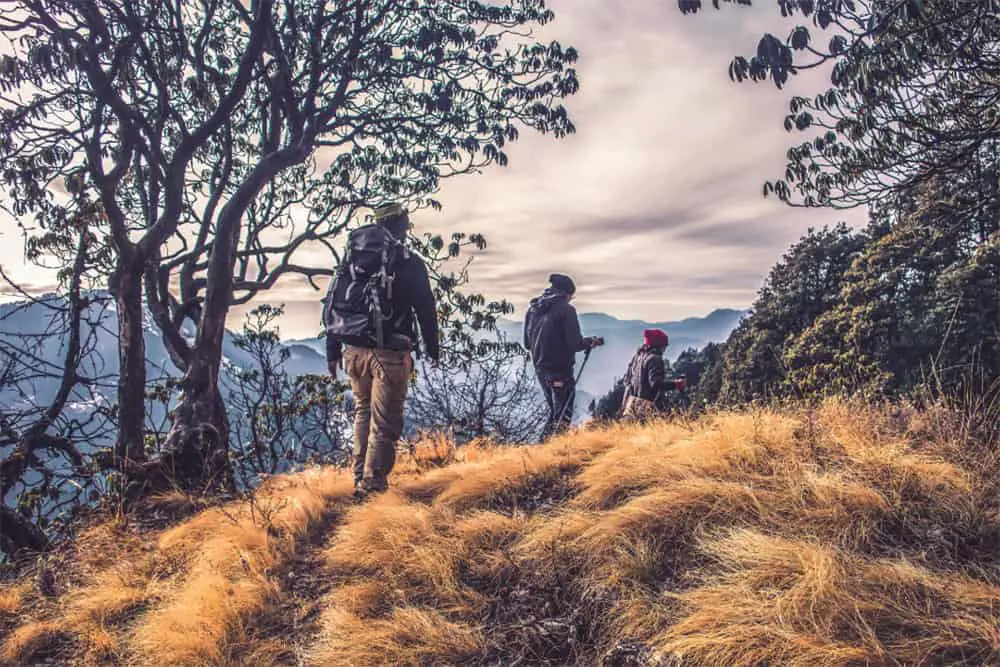
So you’ll need to take something lightweight and nutritious.
Duration Of Hike
The longer you’re travelling, you’ll probably need more food and certainly more water. You must think of how to balance the weight of the food in your bag along with what you’ll need.
Perishable Foods
It’s best to avoid perishables if you’re travelling a far distance, but if you’re taking them – make sure you store them correctly. You don’t want things melting or rotting in your bag and causing an offensive smell.
Read later – Best smell proof bags
The Make-Up Of A Lunch
Whatever you decide to take, the crucial thing is the overall nutritional make-up of the meal. It should consist of carbohydrates, fats and proteins.
Carbohydrates are the initial and main source for the body’s use of energy.
Fats assist in your body getting the vitamins and other nutrients it needs and proteins help with the repair of your body, such as muscles. This is vital when hiking.
Top Picks for Satisfying Trail Meals
Sandwiches
Sandwiches are quick and easy to make and eat. They can contain all of the vital requirements we have just discussed and are made to your specificity. That means you can make them as tasty as you like!
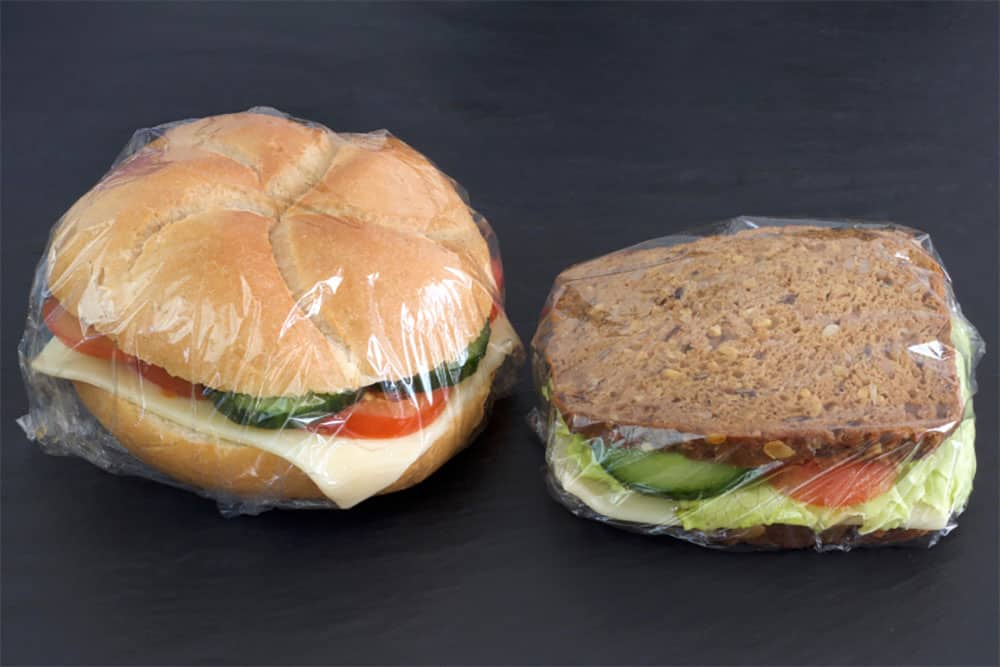
Sandwich ideas:
- Tuna
- Chicken
- Turkey
- Cheese
- Ham
- Peanut butter and jelly
Along with those, make sure you get your salad on top of it. Cucumber and lettuce are the best choices due to their versatility (can go to any sandwich.)
Pasta
Pasta is a huge source of carbohydrates. It’s another quick meal to make before you go hiking and it stores well in a Tupperware box. It’s up to you on what your favourite kind of pasta is, but some basic ideas are here:
- Penne with tomato
- Spaghetti bolognaise
- Linguini with garlic
The one thing to remember with pasta over a sandwich though, is you will have an extra item(s) in your bag – the storage for the pasta and fork.
Cold Dogs
If you’re preparing a lunch for hiking the night before, why not make something tasty hot or cold?
Hot dogs (or in this case cold dogs) are an excellent source of protein and fats which you can compliment with the sauce of your choice.
Try dijon mustard or ketchup for starters! Add some pickles or other salads to your dog and there we have it – lunch is served.
Tuna And Egg Mayo Salad
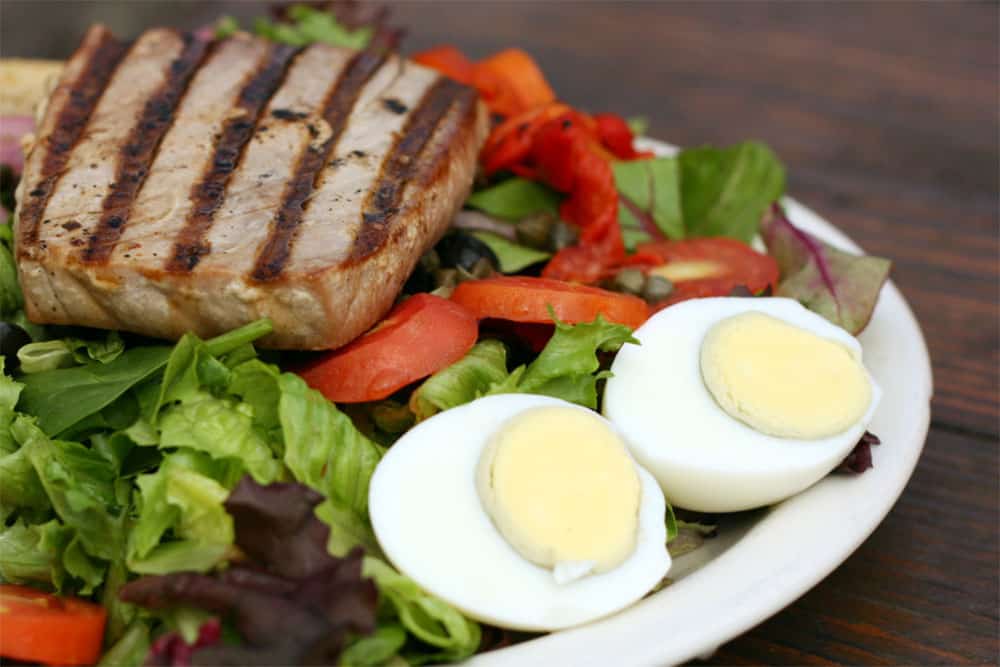
Boil some eggs up, grab a bowl and mix it with some nutritious tuna. This is a very handy lunch to regenerate your muscles and mind. High in protein and vitamins, you’ll enjoy this tasty boost at lunch time!
Salmon Wrap
Salmon, like tuna, is incredibly nutritious. High in Omega 3, protein and some fats. Add this to a carbohydrate packed wrap with some vitamin fueled salad and you’ve got a hiker’s lunching dream!
Beef Jerky
Simplicity is your friend. Beef jerky does not need to be chilled or any special storage. It’s also loaded with protein. You could take a beef jerky with a sandwich and the weight of your bag will not noticeably change.
Greenbelly Meals
You’ve probably seen these at the store. Entirely balanced of nutritional value and incredibly light to carry. Tasty selections to choose from like dark chocolate and banana, you’ve got a great level of choice.
Crackers
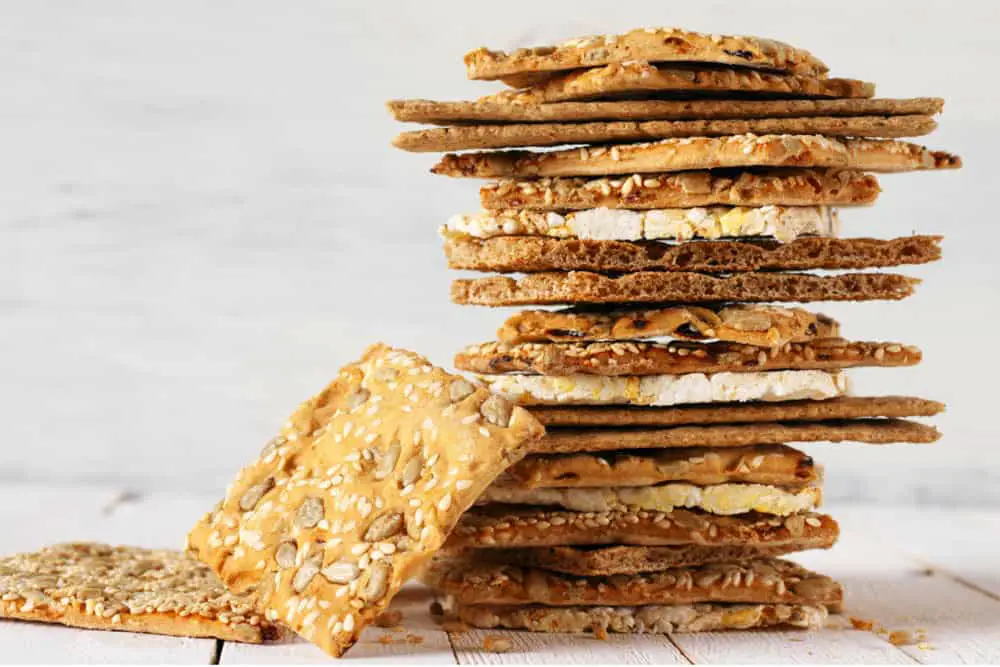
Crackers are a good source of salts and carbohydrates. They don’t need any preparation and are instant “grab me and go” food.
One downside to crackers is that they are likely to crack up in your bag, so you may need to protect them in something – adding to more weight.
Bagels
Same thought process with sandwiches, you can invent your own lunch with a bagel. Things like tuna, salmon, chicken and salami are the fillings to make this your ideal lunch.
Tortilla Wraps
A lighter choice than the bagel – the wrap benefits from the lesser chance of fillings falling out. Wraps are often easier to pack into your bag too. Try wrapping some cooked chicken, fresh peppers and mayonnaise. Yum!
Accompanying To Your Lunch
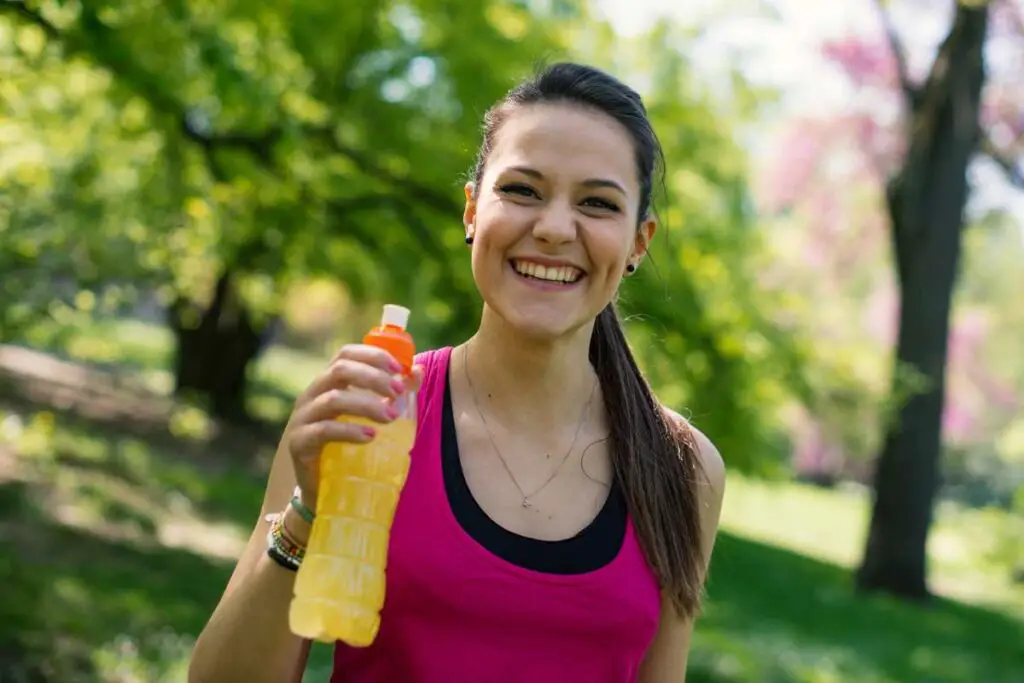
Of course, no lunch would be complete without something to wash it down with!
Here are some drink ideas (remember though, nothing beats the classic choice of water!)
- Gatorade: Juicy, hydrating and refreshing. A great drink to replenish your electrolytes.
- Orange Juice: Loaded with vitamin C and hydrating.
- Instant Coffee: Contentious decision due to its dehydrating effects, but take enough water with you and the caffeine effect with coffee will be beneficial for a long hike.
- Reign Energy: No sugar or calories and packed with electrolytes. Beware though, too much caffeine can cause you to pee (meaning losing hydration!)
Other things you can take with you to add some more fuel to the fire are energy bars, low calorie chips and dehydrated meals. Fresh fruit is always good for you but it has a tendency to perish quickly.
If you plan to take some fresh fruits, make sure you eat them before anything else – and store them carefully. Don’t put grapes under a lunchbox!
Importance of Filling and Nutritious Hiking Lunch
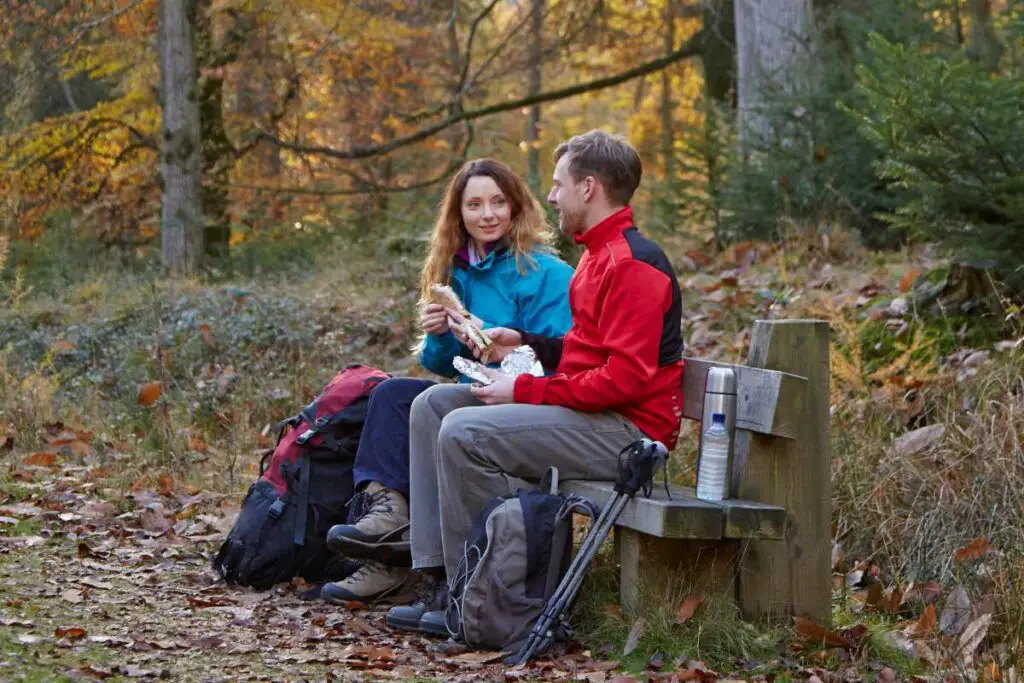
A filling and nutritious hiking lunch is essential for maintaining energy levels, promoting muscle recovery, and preventing fatigue during a hike.
When hiking, your body requires a mix of carbohydrates, proteins, and fats to provide the necessary fuel for your muscles and support bodily functions.
Carbohydrates are the most significant energy source for your body during hiking. They provide the quick energy required to fuel your muscles and keep you moving.
Also read – Can Hiking Build Muscle?
The ideal hiking lunch should consist of 60-70% carbohydrates. Examples of carbohydrate-rich foods include whole-grain bread, oats, and fruits.
Protein plays a vital role in repairing and building muscle tissue. Consuming protein during a hike helps with muscle recovery and reduces the chance of injury or soreness.
Aim for a hiking lunch with 10-15% protein, such as lean meats, cheese, and nuts.
Healthy fats contribute to the absorption of nutrients and provide long-lasting energy. Incorporating 20-30% fats in your hiking lunch ensures your body can effectively utilize the nutrients from other foods. Examples of healthy fats are available in foods like avocados, trail mix, and nut butter.
In addition to fueling your body with the right nutrients, a well-planned hiking lunch should also take into consideration the portability and durability of the foods.
Choose food items that will maintain their freshness during the hike, withstand different temperatures, and not become overly heavy in your backpack.
Some suggestions for a balanced and portable hiking lunch include:
- Tuna or chicken salad on whole-grain bread
- Overnight oats with fruits and nuts
- Packets of nut butter with whole-grain crackers
- Granola bars with low sugar content
- Trail mix containing a mixture of nuts, seeds, and dried fruits
Remember, a filling and nutritious hiking lunch sets the foundation for an enjoyable and successful hiking experience.
Providing your body with the necessary nutrients ensures you remain energized and able to tackle the challenges that come with hiking in the great outdoors.
Planning Your Hiking Lunch

When planning your hiking lunch, it is essential to keep variety, nutrition, and convenience in mind.
Try to include a balance of protein, carbohydrates, fats, and fiber to ensure you have enough energy to fuel your adventure. Hydration is also a crucial factor to consider when thinking about what to pack.
Protein is vital for muscle repair and recovery, making it a significant component of your hiking lunch. Some protein-packed lunch ideas include:
- Chicken or turkey wraps with cheese
- Hard-boiled eggs
- Tuna and crackers
Carbohydrates provide the energy you need to sustain your hike. Opt for high-quality carbs that are easy to pack and consume during your trip. Some carbohydrate-focused lunch ideas are:
- Pasta salad with chicken or other proteins
- Oatmeal or whole grain soups
- Hummus and pita bread with cherry tomatoes
Fats offer long-lasting energy and help maintain healthy body functions during your hike. Good sources of fats can be found in:
- Nut butters (paired with crackers or fruit)
- Avocado (as a sandwich or wrap spread)
- Trail mix (with nuts and seeds)
Fiber helps to keep you feeling full and satisfied while also aiding in digestion. Incorporate fiber-rich foods into your lunch with options like:
- Whole grain bread for sandwiches
- Fresh fruits and vegetables
- Energy bars made from whole food ingredients
Hydration is an essential factor to keep in mind as well. While water is the most critical component, consider incorporating electrolyte replacement options like sports drinks or salt replacement tabs to maintain a proper balance of electrolytes during long or strenuous hikes.
Remember, planning and variety are key to building a hiking lunch that will both satisfy your hunger and provide the energy and nutrients you need. Incorporate these elements into your meal planning to ensure that you have an enjoyable and well-fueled adventure on the trails.
High Energy Snacks for Hiking
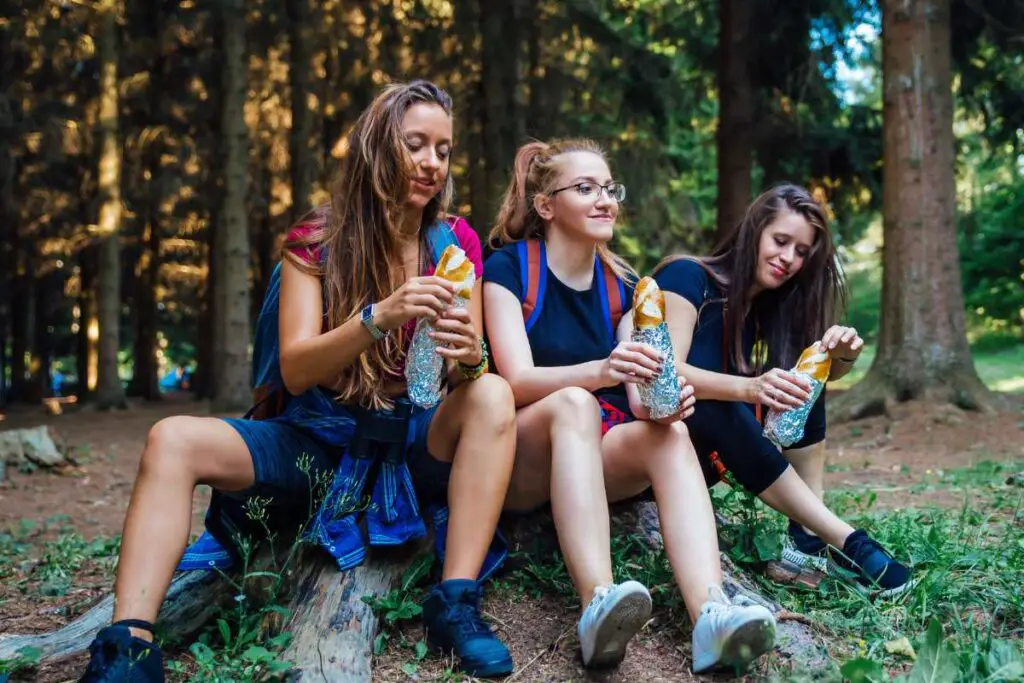
When embarking on a hike, it’s essential to pack high-energy snacks to keep you energized and maintain your stamina throughout the trail.
The following hiking snacks strike the perfect balance between nutritional value and portability, making them an excellent choice for your next adventure.
- Trail mix is a classic hiking snack and for a good reason. The combination of nuts, dried fruit, and sometimes chocolate or other sweet treats provides a well-rounded mix of carbohydrates, healthy fats, and protein. You can customize your trail mix by choosing your favorite nuts, such as almonds, cashews, or walnuts, and pairing them with dried fruits like raisins, apricots, or cranberries.
- Dried fruit on its own is also a great source of quick energy. While they are high in natural sugars, they deliver a rapid burst of energy that can be particularly helpful in maintaining momentum during long hikes. To balance the sugar content, consider pairing dried fruit with nuts or seeds, which provide healthy fats and proteins.
- Nuts are a fantastic hiking snack due to their high calorie-to-weight ratio, making them an efficient source of energy without adding a significant amount of weight to your pack. Opt for unsalted or lightly salted nuts to avoid unwanted sodium and dehydration.
- When it comes to convenient and portable protein sources, protein bars and energy bars are hard to beat. They come in various flavors and formulations, which cater to different dietary needs and preferences. Look for bars with high-quality protein sources like whey protein or plant-based protein, and opt for less processed ingredients where possible.
- Dark chocolate offers a boost of energy in a delicious package. In moderation, dark chocolate contains antioxidants, and it can help improve your mood during the hike. Pair it with nuts, dried fruit, or incorporate it into your trail mix for a more enjoyable hiking snack.
- Lastly, granola bars are another excellent option for hikers, offering a tasty combination of whole grains, dried fruit, nuts, and seeds. Some granola bars even have added protein to help keep you feeling fuller for longer. Be sure to choose bars with minimal added sugars and natural ingredients to get the most out of this high-energy hiking snack.
Remember to stay hydrated and listen to your body during your hike.
By packing a variety of high-energy snacks, you can ensure that you have the fuel necessary to complete your excursion and enjoy the great outdoors.
Lightweight and Portable Lunch Ideas
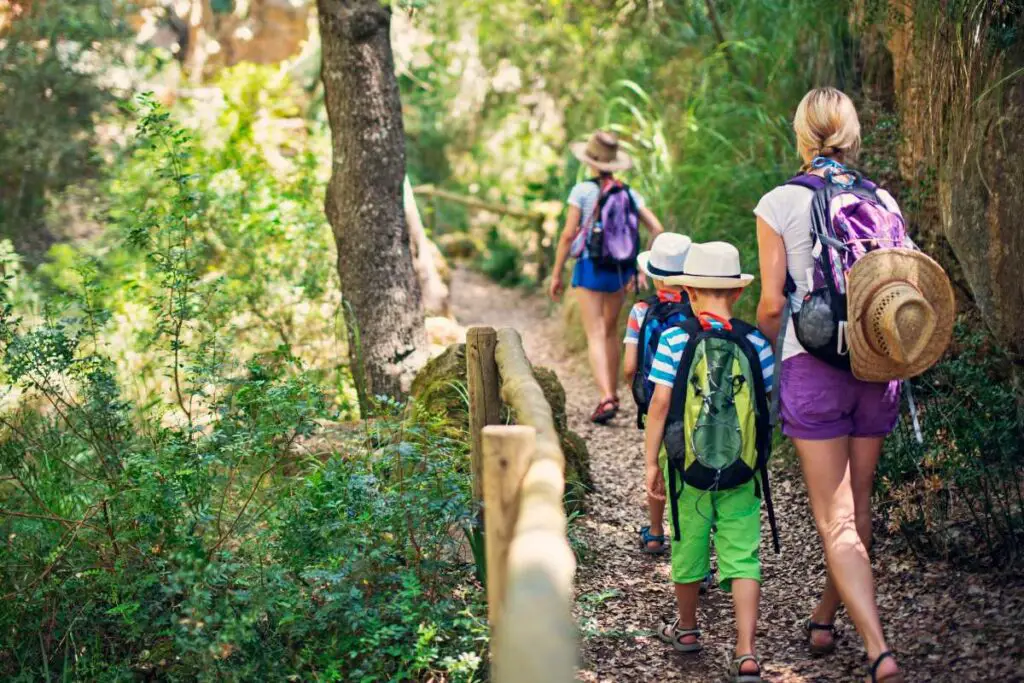
When planning a hiking adventure, it’s essential to consider lightweight and portable lunch options that will provide adequate nutrition and energy without adding extra weight to your backpack.
Here are a few ideas for satisfying lunches that meet these criteria.
Dehydrated Meals
Dehydrating food items can significantly reduce their weight while preserving their nutritional value, making them ideal for lightweight hiking lunches.
You can dehydrate fruits, vegetables, and even meats to create a variety of meals suitable for the trail. For example, homemade fruit leather acts as a great energy-boosting snack that can easily supplement a light lunch.
Wraps
Versatile and easy to make, wraps are perfect for hiking lunches.
They can be made with various fillings such as tuna, chicken, or hummus, as well as a variety of vegetables like lettuce, tomatoes, or bell peppers for added nutrition.
Wraps are lightweight, portable, and can be tailored to individual preferences and dietary requirements.
Pasta Salads
A cold pasta salad can be a satisfying and filling lunch option that requires minimal preparation.
Mix cooked pasta with ingredients like tuna, fresh vegetables, and a light vinaigrette dressing for a meal rich in calories, protein, and carbohydrates.
Pasta salad can be prepared in advance and stored in a small, sealable container to maintain freshness on your hike.
Sandwiches
While sandwiches may not be the lightest option on this list, choosing the right ingredients can help reduce weight while providing a satisfying meal on the trail.
Opt for lightweight fillings like smoked salmon, ham slices, or even nut butter for a filling and delicious lunch. To reduce the bulk, consider using thinly sliced bread or a tortilla in place of traditional sandwich bread.
In summary, balance is key when selecting lightweight and portable lunch options for your hiking adventures.
By incorporating a mix of protein, carbohydrates, and healthy fats, you can create a satisfying and energizing meal that will keep you going on the trail. Considering ideas like dehydrated meals, wraps, pasta salads, and sandwiches will help you prepare a well-rounded lunch suitable for any hike.
Protein-Rich Foods for Hiking

Protein is an essential nutrient to keep you energized and your muscles strong during hikes.
Striking the right balance means finding convenient, portable, and satisfying options for your trail lunches.
Here’s a list of protein-rich foods that make excellent hiking companions:
- Meats and fish: Although fresh meat isn’t practical for hikes due to spoilage concerns, several shelf-stable alternatives fit the bill. Tuna, sardines, or salmon in foil pouches are great compact sources of protein and omega-3 fatty acids. Additionally, opt for jerky made from various meats, such as beef or turkey, for a lightweight and chewy snack with a protein punch.
- Cheese: Hard cheeses, like Parmesan or Gouda, hold their shape and texture during hikes. They are not only rich in protein but also provide valuable calcium and fats necessary for endurance on the trail.
- Nut butter: Nut butters, such as peanut or almond, are excellent sources of healthy fats, protein, and calories. Spread nut butter on crackers, tortillas, or other carriers for a satiating and nutritious trail lunch. Better yet, opt for single-serving packets for a mess-free experience.
- Protein bars: Widely available in various flavors and textures, protein bars offer a convenient and often tasty way to ensure that you’re getting sufficient protein while hiking. Choose bars with around 20 grams of protein per serving for an optimal energy boost on the trail.
- Eggs: Hard-boiled eggs provide a good balance of protein and other nutrients, making them an easy, compact trail food. Peel the eggs before packing and be careful not to crush them.
- Beans and legumes: Beans and legumes like black beans, chickpeas, and lentils can be incorporated into trail lunches. Hummus made from cooked chickpeas is a great source of protein, perfect for dipping vegetables or spreading on a sandwich or wrap. Make sure to pack the hummus in leak-proof containers.
With these options, you’ll have no problem fueling your hiking adventures with protein-packed lunches.
Mix and match the various protein sources to keep trail lunches interesting and satisfying, ensuring that you have enough energy to tackle even the most challenging hikes.
Vegetables and Fruits for Hiking
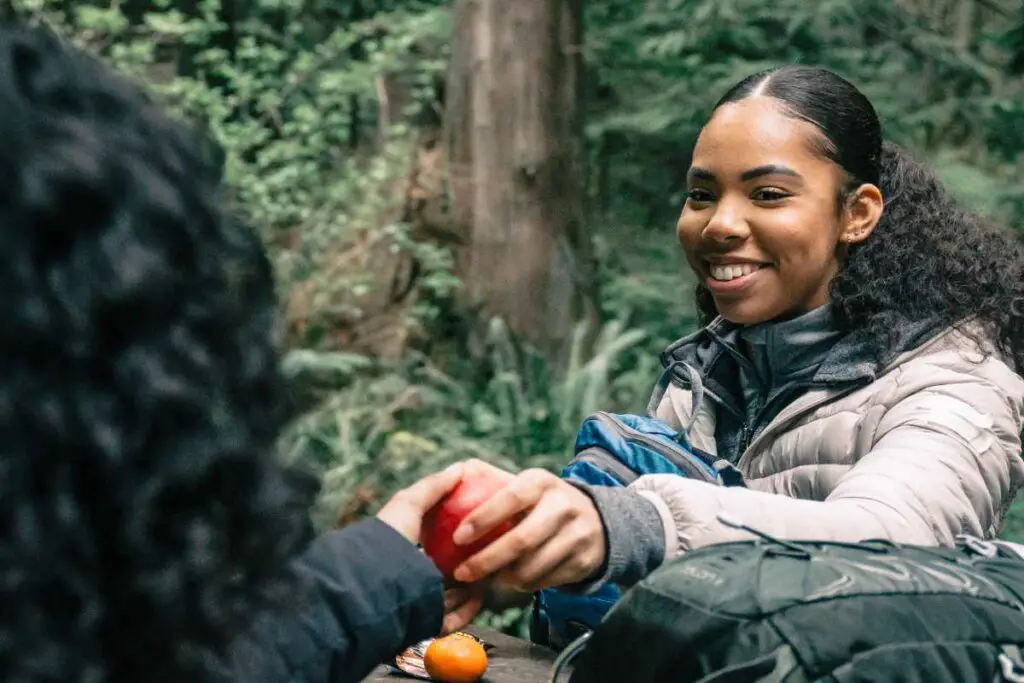
Vegetables and fruits are an essential part of any nutritious hiking meal, as they provide a variety of essential vitamins, minerals, and hydration.
When planning your hiking lunches, it’s crucial to consider options that offer the right balance of nutrients, are easy to pack, and have a good shelf-life during the trek.
- Avocado is an excellent choice for hikers due to its high content of healthy fats, fiber, and essential nutrients. You can slice an avocado and add it to your wraps, sandwiches, or salads, or even mash it with a little salt and pepper for a tasty spread. However, make sure to pack it carefully in your backpack to prevent bruising.
- Lettuce varieties like romaine or iceberg are lightweight, refreshing, and provide a good source of vitamins A, K, and C. They can be used as a base for salads or added to wraps for a delicious crunch. To keep the lettuce fresh, consider packing them in sealed bags with a small paper towel to absorb any excess moisture.
- Fresh fruit such as apples, oranges, and bananas make for great hiking snacks due to their natural sugars providing energy and electrolytes. They are easy to carry and can be eaten as-is or sliced and added to your meals. Just be cautious about packing delicate fruits like berries, as they may get squished during the journey.
In addition, consider these fruits and vegetables for your hiking lunch:
- Baby carrots—these are both crunchy and convenient, making for a great snack when paired with hummus or eaten on their own.
- Cucumber—this hydrating option can be sliced and used in salads or eaten with your favorite dip.
- Bell peppers—these colorful vegetables are high in vitamin C and add flavor and crunch to your sandwiches, wraps, or salads.
- Dried fruits (such as apricots, raisins, and cranberries)—these concentrated sources of energy and nutrients are lightweight, easy to pack, and provide a sweet treat on the trail.
While fresh vegetables and fruits have many benefits, remember to pack and prepare them properly to maintain their freshness throughout the hike.
Incorporating a variety of these options into your hiking lunches will promote a balanced diet and keep you energized during your adventure.
Read next – Healthy hiking food ideas
Keeping Hydrated on the Trail
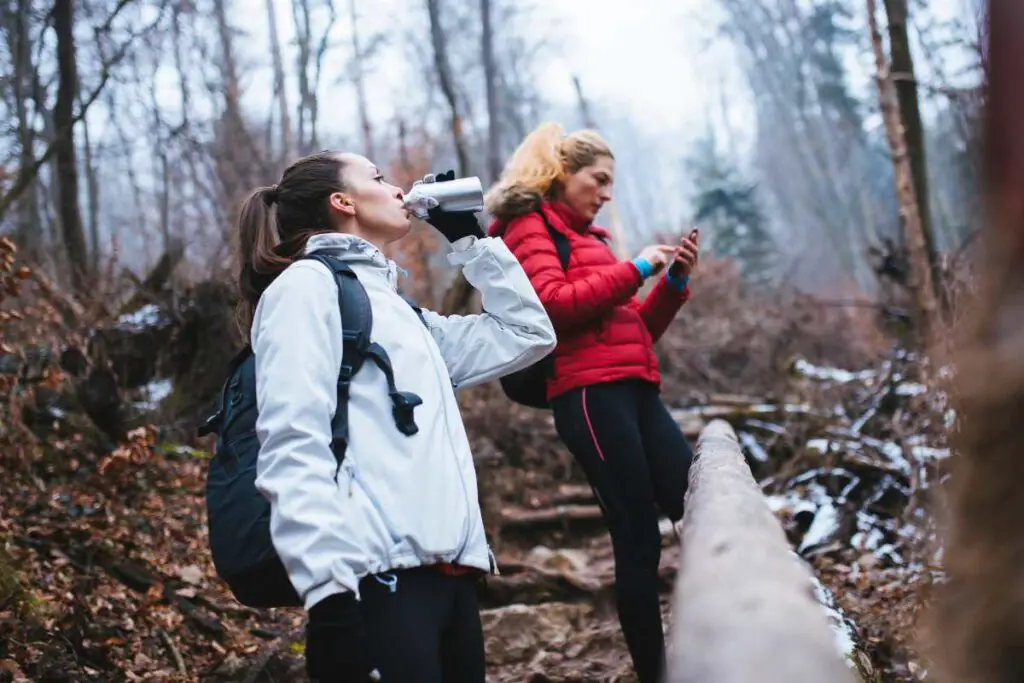
Maintaining proper hydration during a hiking excursion is crucial, as it plays a significant role in the body’s overall function and energy levels.
Dehydration can lead to fatigue, dizziness, and even more severe complications if not promptly addressed.
Here are some tips for staying hydrated while enjoying your hiking adventure:
Drink Water Regularly
Consume water at regular intervals, even if you don’t feel thirsty.
Thirst is often a late indicator of dehydration, and it’s essential to proactively maintain a sufficient water intake. Aim for about half a liter of water per hour of moderate hiking activity in mild temperatures.
Pack Enough Water
Before embarking on your hike, assess the trail length, and ensure you pack enough water to keep you properly hydrated throughout the journey.
It’s recommended to carry about 2 liters of water per person for a full day of hiking. Always carry extra water in case of unforeseen circumstances or delays.
Choose Electrolyte-Rich Beverages
In addition to water, consider including electrolyte-rich beverages such as sports drinks or coconut water in your hydration plan. These can help replenish the essential minerals lost through sweat and keep your body’s electrolyte balance intact.
Monitor Your Hydration Status
Be attentive to signs of dehydration, which may include dark-colored urine, dizziness, headache, or muscle cramps.
If you notice any of these symptoms or haven’t urinated in more than four hours, it’s essential to stop and rehydrate immediately.
Utilize Water Sources Along the Trail
If your chosen trail has reliable water sources such as streams or springs, you can plan to refill your bottles or hydration bladder while on the go.
However, always treat the water you collect from natural sources with a portable water purifier or filter to eliminate potential contaminants.
By following these guidelines and prioritizing hydration, you can help ensure a safe and enjoyable hiking experience for both yourself and your fellow adventurers.
Meal Preparation for Hiking
When it comes to meal planning for hiking, it is essential to consider the specific needs of backpackers.
To properly plan meals, hikers need to take into account the duration of the trip, available cooking equipment, and the nature of the trail.
Meal planning for a day hike should focus on easy-to-prepare, nutrient-dense foods that can be consumed on the go, such as meal bars, PB&J sandwiches, or crackers and cheese.

For backpackers on multi-day trips, a more comprehensive meal plan is required. Per day, aim for 1½ to 2½ lbs. of food, or 2,500 to 4,500 calories, per person, depending on the intensity of the hiking and individual needs.
Backpacking food should be lightweight, easy to pack, and require minimal preparation. It is important to include a variety of meals to prevent menu fatigue during the hike.
Some great options for backpacking lunches include tuna pasta salad, overnight oats, or honey mustard chicken salad sandwiches.
When preparing backpacking meals, aim to minimize the use of cooking equipment and fuel. A backpacking stove is a popular choice for heating water and cooking simple meals. Alternatively, consider pre-cooking meals, which can be subsequently dehydrated and rehydrated on the trail with minimal effort.
Remember to tailor the meal plan according to individual dietary preferences and restrictions, such as vegan or gluten-free diets.
Also, consider the availability of water sources and opt for less water-intensive dishes. For example, choose options like pasta, couscous, buckwheat, fruits, or vegetables.
In summary, planning hiking lunches involves considering factors like the duration and intensity of the hike, available cooking equipment, and individual dietary needs.
By opting for lightweight, nutrient-dense, and easy-to-prepare backpacking food, hikers can stay fueled while enjoying their outdoor adventures.
Conclusion
After evaluating various hiking lunch ideas, it is clear that there are plenty of delicious and nutritious options to keep you fueled on the trail.
The key to a successful hiking lunch is ensuring that it is both satisfying and easy to prepare, while also being portable and non-perishable. Some top choices include tuna pasta salad, overnight oats, sandwiches like turkey and cheese pinwheels or classic PB&J, meal bars, and black bean taco salad.
When planning your hiking lunches, consider the nutritional value and energy content of your chosen meals.
Foods rich in protein, fiber, and healthy fats can help provide long-lasting energy for hikers. Items such as hard-boiled eggs, hummus and pita, beef jerky, and nut butters with crackers are excellent options that can easily be packed and carried on a hike.
Ultimately, finding the best hiking lunch for you will depend on your personal tastes and preferences.
Don’t be afraid to experiment with different recipes and combinations to discover what works best for your needs. By carefully selecting meals that are both enjoyable and nourishing, you can ensure that you’ll stay fueled and happy on your outdoor adventures.
Frequently Asked Questions
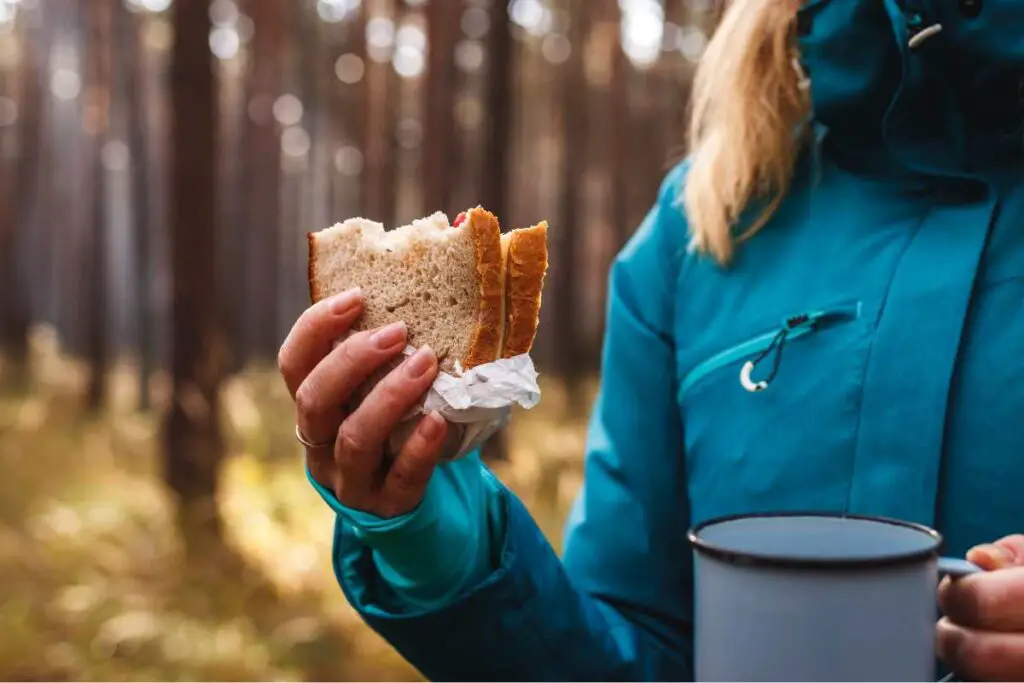
What are some easy-to-prepare lunch options for hiking?
There are several easy-to-prepare lunch options for hiking:
- Tortilla wraps with protein fillings like chicken, tuna, or hummus
- Sandwiches with simple fillings like peanut butter and jelly, or ham and cheese
- Quinoa, pasta, or couscous salads that can be prepared ahead of time and eaten cold
- Hard-boiled eggs, which provide protein and are simple to pack and eat
- Nut butters and crackers for energy-boosting simple snack-like lunches
What types of food provide sufficient energy for all-day hiking?
For all-day hiking, it’s crucial to consume foods that release energy slowly over time. Opt for foods containing complex carbohydrates, protein, and healthy fats:
- Complex carbohydrates: whole grain bread, pasta, rice, or quinoa for sustained energy
- Protein: chicken, turkey, tuna, beans, or eggs provide the necessary nutrients for muscle recovery and strength
- Healthy fats: foods containing nuts, seeds, or avocado contribute to energy production
Which foods are most suitable for backpacking lunches?
Backpacking lunches should be compact, lightweight, and non-perishable. Some suitable options include:
- Tortilla wraps or pita bread, which are compact and versatile for various fillings
- Dehydrated or vacuum-sealed meals, as they are lightweight and easy to pack
- Meal bars or granola bars, providing energy in a small, convenient package
- Beef jerky, as a lightweight source of protein
- Nuts and dried fruit for a mix of healthy fats, protein, and carbohydrates
What are the best fruit options to pack for a hiking trip?
Choose fruits with a longer shelf life and those that can endure being packed in a backpack:
- Apples, which are durable and don’t bruise easily
- Oranges, as they are encased in a protective peel
- Grapes, if stored in a rigid container to prevent crushing
- Dried fruits like apricots, pineapple, or mango for a convenient and non-perishable option
What cold meal ideas work well for backpacking?
Cold meal ideas for backpacking should be filling and nutritious, yet easy to pack and prepare:
- Pasta or grain salads made with lightweight, non-perishable ingredients
- Pita bread filled with non-messy fillings like hummus and cucumber
- Cheese and crackers, a versatile and straightforward option
- Bean salads, which are satisfying and easy to prepare in advance
- Overnight oats prepared in a sealed container and consumed cold
What is a suitable sandwich filling for a hike?
Suitable sandwich fillings for a hike should be non-perishable, lightweight, and withstand fluctuating temperatures:
- Peanut butter and jelly, a classic combination that is filling and doesn’t require refrigeration
- Tuna or chicken salad made with minimal mayonnaise to reduce spoilage risk
- Cheese varieties like cheddar, gouda, or Swiss, which pair well with vegetables or canned meat
- Nut or seed butter with fruit preserves or dried fruit for a healthier alternative
- Avocado and chickpea mash for a protein-packed and creamy filling
Food For Thought
It’s always good to plan your food before you go hiking but above all – stay hydrated!
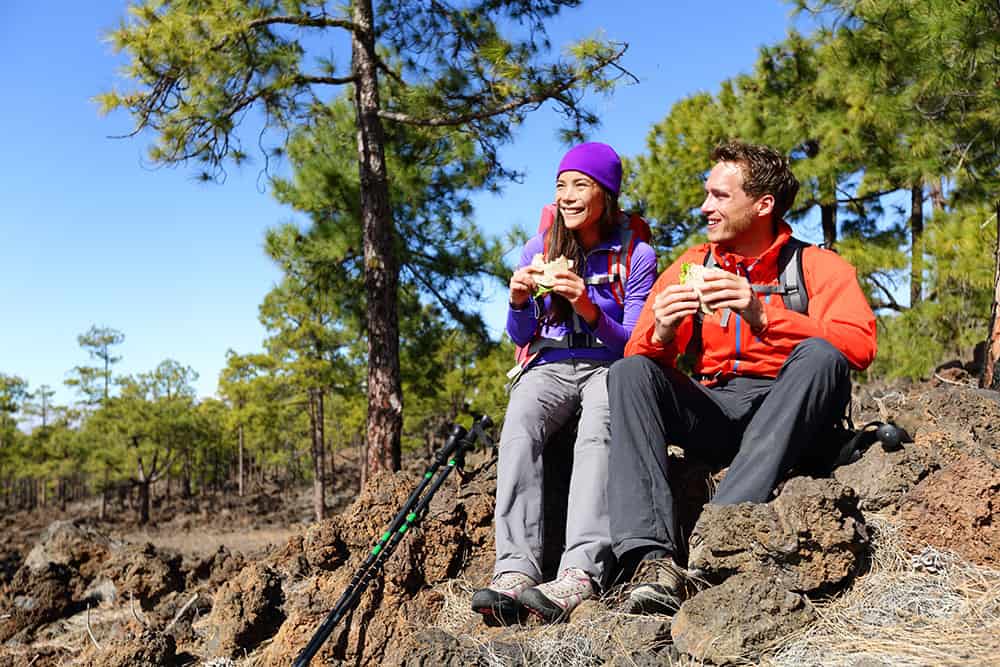





[…] disappointed in certain popular brands. Prepackaged granola bars are often quite dry and hard to eat, and getting ones with proper fruit flavors can be challenging without getting a large amount of […]
[…] choose to bring with you. Everything from meals to snacks needs to be ready to quickly and easily eat since your eating times can vary massively depending on your plans and any unexpected hungry […]